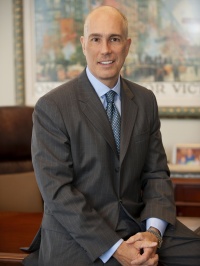This article was published in the August 2016 issue of STORES Magazine.

Matthew Shay
After years of challenges, things are looking up in retail.
NRF’s annual back-to-school survey shows that parents of K-12 and college students plan to spend a record $75.8 billion this summer, a whopping 11.5 percent increase over 2015.
They’re doing so largely because they feel better about the economy. While many still have concerns, the survey found 27 percent of K-12 families say the economy will have no effect on their plans, up from 24 percent last year. The same is said by 30 percent of college families, up from 26 percent. Both are record highs.
Those aren’t the only upbeat indicators. Gross domestic product is in line to grow between 1.9 and 2.4 percent this year. June retail sales as calculated by NRF — excluding automobiles, gasoline stations and restaurants — were up 5.1 percent over the same time last year. Jobs grew by 287,000 in June from May, including 29,500 in retail that brought our industry’s job growth to a total of more than 240,000 since the same time a year ago. And average hourly earnings were up 2.6 percent year-over-year.
Even the weather seems to be on our side. Patterns developing in the Pacific are currently in transition from El Nino to La Nina, which has the potential for a cooler-than-average winter that would help drive sales of warm coats and other seasonal apparel this fall. For retailers who saw clothing sales take a hit from last year’s unusually warm winter, that is clearly a welcome relief.
We like what we’re seeing. In fact, we like it so much that NRF has increased its official forecast for retail sales growth for the year to 3.4 percent from our previous 3.1 percent. Given that sales grew by nearly 4 percent in the first half of the year, we’re pretty confident in the number.
That’s a big difference from this time last year, when a slow start to the year forced us to reduce our 2015 forecast to 3.5 percent from our original 4.1 percent. And the year eventually turned out slightly weaker, coming in at 3.4 percent.
All of this doesn’t mean that everything is perfect. Overall job growth is slowing somewhat. Inflation is inching forward, which could lead to higher interest rates. External factors as remote as Britain’s recent Brexit vote can always lead to unexpected impacts.
The biggest challenge might be in how uncertainty over the upcoming presidential election affects consumer confidence. Voters are often cautious around the time of change in the White House. For the partisan, there is the worry of what will happen with the economy if the other side’s candidate should win. Even for the politically neutral, there are concerns about how the partisan will react.
On balance however, what we’re seeing shows that consumers are taking a deep breath and heading out to shop. And when consumers take that deep breath, retailers can breathe more easily.